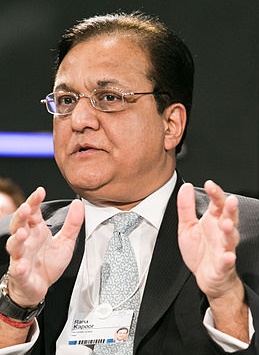FM delivers on fiscal consolidation
17 Feb 2014
 Within the limited bandwidth that an interim budget offers, the finance minister judiciously steered clear of announcing any big-tickets sops. The focus of the budget has rightly been on resuscitating growth while adhering to fiscal prudence – announcing a 50 bps correction in fiscal deficit target to 4.1 per cent in FY15.
Within the limited bandwidth that an interim budget offers, the finance minister judiciously steered clear of announcing any big-tickets sops. The focus of the budget has rightly been on resuscitating growth while adhering to fiscal prudence – announcing a 50 bps correction in fiscal deficit target to 4.1 per cent in FY15.
The decision to cut excise duty by 2 per cent on capital goods and consumer non-durables, along with specific relief to the auto and chemicals sectors among others, is worthy of note. This will bring the much-needed comfort to the manufacturing sector, which has been recording poor growth for over 2 successive years now.
On the revenue side, as expected, the interim budget keeping with the conventions, did not announce any changes in tax laws.
The government expects to improve the Tax-to-GDP ratio by 70 bps to 10.9 per cent in FY15, owing to a revival in economic growth.
In addition, the government has pegged proceeds from PSU disinvestment at Rs36,900 cr and non-PSU disinvestment at Rs15,000 cr. As such, it is critical that the government strives to pace its disinvestment program evenly during the course of the year.
On the expenditure side, the government has pegged subsidy burden at a realistic Rs2.55 tn – the same level as FY14, at 2.0 per cent of GDP in FY15.
On the other hand, Plan expenditure after bearing much of the burden of fiscal curtailment in FY14, has been budgeted to grow by a healthy 16 per cent in FY15 (over revised estimates for FY14). One hopes that this budgeted plan expenditure is executed as envisaged; eschewing the significant pruning seen over the last few years.
Perhaps non-plan expenditure could have shared a greater burden of expenditure cut, in a bid to better the quality of fiscal adjustment.
On balance, the announced interim budget appears pragmatic; allowing enough flexibility to next government for announcement of the full fledged budget post general elections.
In his speech, the finance minister appropriately highlighted 10 goals that must continue to be on government's radar in the coming years.
Among these, continued fiscal consolidation to reduce fiscal deficit to 3.0 per cent of GDP by 2016, investor-friendly regime to ensure comfortable financing of CAD, revival in manufacturing in general and manufacturing exports in particular, along with social sector spending to enhance skill development and create world-class urban cities, are steps in the right direction critical for reviving the Indian economy.













.jpg)






.jpg)









